




Super glue is a great adhesive that can be used for a variety of tasks, from fixing broken objects to bonding materials together. However, accidents happen, and sometimes super glue ends up on surfaces where it shouldn’t be, like your worktop. Removing super glue from a worktop can be a challenging task, but with the right techniques and solutions, it can be done effectively and easily.
Here are some top tips for removing super glue from a worktop:
1. Acetone: Acetone is a powerful solvent that can effectively dissolve super glue. You can find acetone in nail polish remover or as a standalone product. Dampen a cloth or cotton swab with acetone and gently rub it on the super glue. Be careful not to use too much acetone, as it can damage the worktop.
2. Warm Soapy Water: If you’re looking for a gentler solution, warm soapy water can also help remove super glue. Mix some dish soap with warm water and apply it to the affected area. Let it sit for a few minutes, and then gently scrub the super glue with a sponge or cloth.
Top RatedLucemill Pure Acetone Nail Polish RemoverSuper strength for professional resultsThis high-purity acetone effectively removes gel polish and acrylic nails, making it an essential tool for nail care. Its versatile formula also serves various cleaning purposes, guaranteeing professional-grade results every time.
3. Olive Oil: If you don’t have acetone or soapy water on hand, olive oil can be a surprising solution. Apply a generous amount of olive oil to the super glue and let it sit for a few minutes. The oil will help loosen the adhesive, making it easier to remove. Afterward, gently scrape off the super glue with a plastic scraper or your fingernail.
Remember, when removing super glue from a worktop, it’s important to take your time and be gentle. Avoid using sharp tools or excessive force, as this can damage the surface. With the right technique and solution, you can successfully remove super glue and restore your worktop to its original state.
Effective Methods to Remove Super Glue from a Worktop
If you’ve accidentally spilled super glue on your worktop, don’t panic! With the right methods and a little patience, you can effectively remove super glue and get your worktop looking good as new. Here are some effective methods to tackle this issue:
1. Acetone or Nail Polish Remover
One of the most common methods to remove super glue is by using acetone or nail polish remover. Soak a cotton ball or a cloth with acetone or nail polish remover and gently dab the affected area. Let it sit for a few minutes to allow the acetone to dissolve the glue. Then, using a clean cloth, wipe away the glue. Repeat as necessary until the glue is completely removed.
2. Warm Soapy Water
If you don’t have acetone or nail polish remover on hand, warm soapy water can also be effective in removing super glue. Mix a few drops of dishwashing liquid with warm water and apply it to the glue residue. Let it sit for a few minutes to soften the glue, then gently scrub the area with a soft cloth or sponge. Rinse with clean water and wipe dry.
3. Vinegar or Lemon Juice
Vinegar and lemon juice are natural solvents that can help break down super glue. Soak a cloth or cotton ball in vinegar or lemon juice and apply it to the affected area. Allow it to sit for a few minutes before gently scrubbing or wiping away the glue. Repeat as necessary until the glue is fully removed.
4. Rubbing Alcohol
Another effective method is to use rubbing alcohol. Soak a cloth or cotton ball with rubbing alcohol and apply it to the super glue. Let it sit for a few minutes to dissolve the glue, then gently scrub the area with a soft cloth or sponge. Rinse with water and wipe dry.
5. Use a Plastic Scraper
If the super glue has hardened on the worktop, it can be helpful to gently scrape it off with a plastic scraper or a credit card. Be careful not to scratch the surface of the worktop, and use gentle pressure to avoid any damage.
Remember to always test any of these methods on a small, inconspicuous area of your worktop before applying them to the affected area to ensure they do not cause any damage or discoloration. If the glue is particularly stubborn or if you are unsure about how to proceed, consider seeking professional advice or assistance.
By using these effective methods, you can successfully remove super glue from your worktop without causing any damage and restore its original appearance.
Gentle Household Products for Super Glue Removal
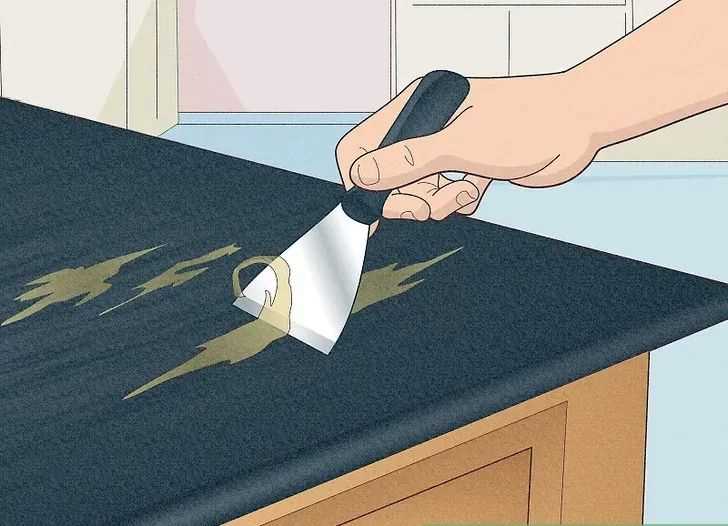
Lemon Juice
Lemon juice is a common household product that can be used to remove super glue from a worktop. Simply squeeze fresh lemon juice onto the affected area, let it sit for a few minutes, and then gently scrub away the glue with a cloth or sponge. The acidity of the lemon juice helps to break down the adhesive properties of the super glue, making it easier to remove.
Vinegar
White vinegar is another gentle household product that can be effective in removing super glue. Soak a cloth or sponge in white vinegar and then apply it to the glued area. Leave it on for a few minutes to allow the vinegar to penetrate the glue, and then wipe it away with a clean cloth. The acidity of the vinegar will help to dissolve the super glue, making it easier to remove.
Nail Polish Remover
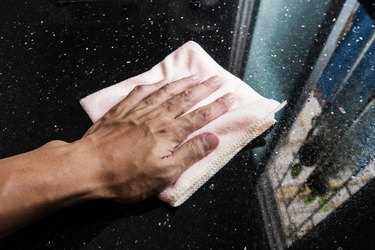
If you have nail polish remover on hand, it can also be used to remove super glue from a worktop. Apply a small amount of nail polish remover to a cotton ball or cloth and dab it onto the glued area. Let it sit for a few minutes, and then gently scrub away the super glue with a cloth or sponge. Make sure to rinse the area thoroughly with water after removing the glue to remove any residue from the nail polish remover.
Oil
Various oils, such as vegetable oil, olive oil, or coconut oil, can be used to remove super glue from a worktop. Apply a small amount of oil to the glued area and let it sit for a few minutes to soften the adhesive. Then, gently scrub away the super glue using a cloth or sponge. The oil helps to break down the glue, making it easier to remove.
Warm Soapy Water
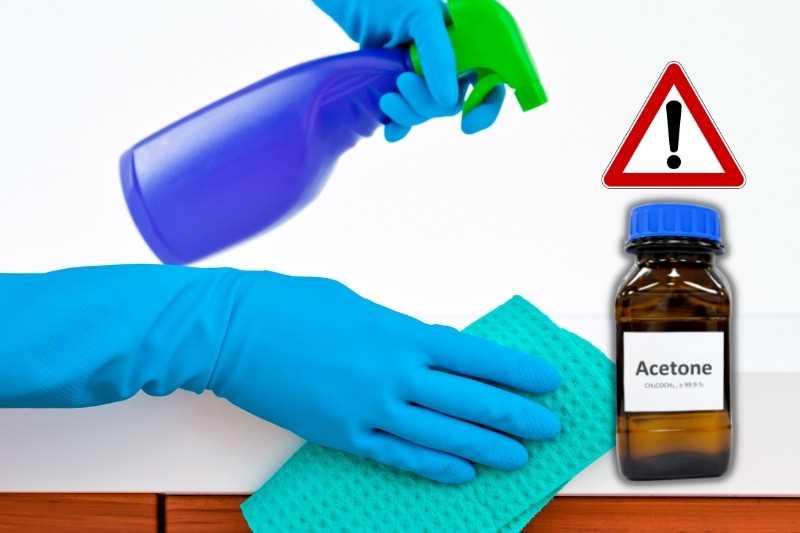
A mixture of warm water and dish soap can also be effective in removing super glue. Fill a bowl with warm water and add a few drops of dish soap. Soak a cloth or sponge in the soapy water and then apply it to the glued area. Let it sit for a few minutes to soften the glue, and then gently scrub away the super glue. Rinse the area thoroughly with water after removing the glue.
Remember to always test these products on a small, inconspicuous area of the worktop before applying them to the glued area. This will help to ensure that they do not cause any damage or discoloration. If the super glue does not come off easily or if it has bonded to a sensitive surface, it may be best to seek professional assistance.
Natural Solvents to Dissolve Super Glue
When dealing with super glue stains on your worktop, it’s important to use effective solvents to ensure a safe and easy removal process. Natural solvents can be a great alternative to chemical-based products, offering a more eco-friendly and gentle solution. Here are some natural solvents that can help dissolve super glue:
1. Vinegar
Vinegar is a versatile household ingredient that can be used for various cleaning purposes, including removing super glue. Soak a cloth or sponge in vinegar and gently dab it onto the super glue stain. Let it sit for a few minutes to allow the vinegar to penetrate the glue. Then, using a scraper or your fingers, slowly peel off the glue. Repeat the process if necessary.
2. Lemon Juice
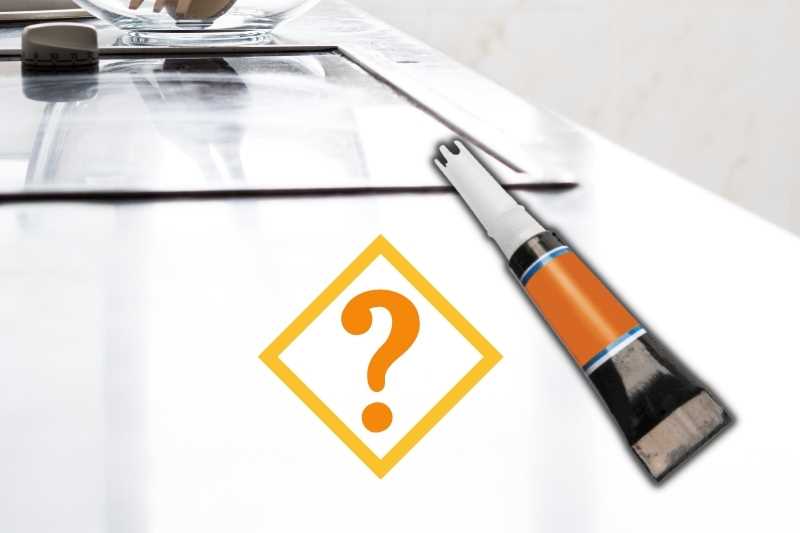
Lemon juice is another natural solvent that can effectively dissolve super glue. Squeeze fresh lemon juice onto the glue stain and let it sit for a few minutes. The acidic properties of lemon juice will help break down the glue. Use a soft cloth or sponge to scrub the area gently. Rinse with water and repeat if needed.
3. Baking Soda
Baking soda is an excellent natural adhesive remover. Create a paste by mixing baking soda with a small amount of water. Apply the paste to the super glue stain and let it sit for about 15 minutes. Gently scrub the area with a cloth or sponge, and the super glue should start to dissolve. Rinse with water and repeat if necessary.
4. Coconut Oil
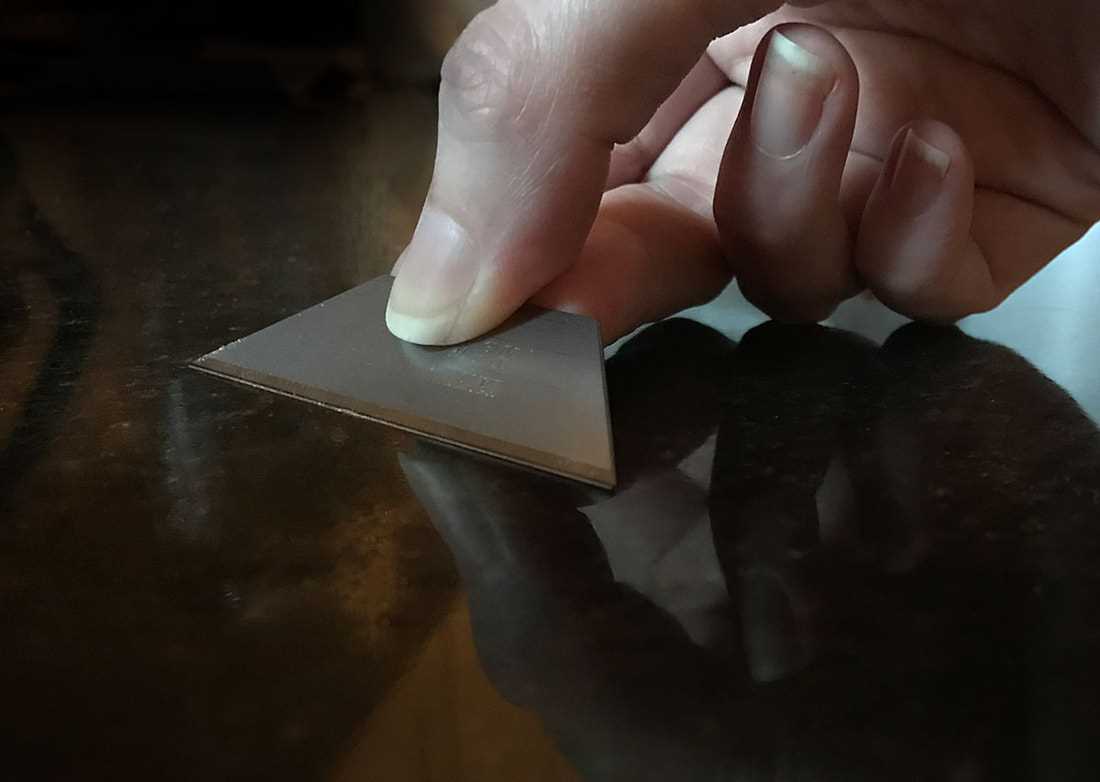
Coconut oil is not only a great moisturizer but also an effective natural solvent for super glue removal. Apply a generous amount of coconut oil onto the super glue stain and let it sit for a few minutes. The oil will help break down the adhesive properties of the glue. Gently scrape off the glue using a scraper or your fingers. Clean the area with soap and water afterward.
5. Olive Oil
Olive oil is another natural solvent that can help dissolve super glue. Apply a small amount of olive oil onto the glue stain and let it sit for a few minutes. The oil will soften the glue, making it easier to remove. Gently scrape off the glue using a scraper or your fingers. Wipe the area with a clean cloth to remove any residue.
Remember to patch test any natural solvent on an inconspicuous area of your worktop before applying it to the super glue stain. This will help ensure that the solvent does not cause any damage or discoloration.
By using these natural solvents, you can effectively dissolve super glue stains on your worktop without the need for harsh chemicals. Give these methods a try and enjoy a clean and glue-free surface!
Mechanical Methods to Remove Super Glue from a Worktop
If you have accidentally spilled super glue on your worktop, there are several mechanical methods you can try to remove it. These methods involve physically removing the glue from the surface using simple tools and techniques. Here are some effective mechanical methods to remove super glue from a worktop:
1. Scraping
One of the simplest ways to remove super glue from a worktop is by scraping it off. You can use a plastic scraper, a spatula, or even an old credit card to gently scrape away the dried glue. Start at the edge of the glue and slowly work your way towards the center, being careful not to damage the worktop.
2. Sanding
If the super glue has hardened and cannot be easily scraped off, sanding can be an effective method. Use fine-grit sandpaper or a sanding block to gently sand the glue until it starts to wear away. Be cautious not to sand too aggressively, as this can damage the worktop’s finish.
3. Heat

Another mechanical method to remove super glue is by applying heat. You can use a hairdryer or a heat gun on a low setting to warm up the glue. This will soften the glue and make it easier to scrape off. However, be careful not to overheat the worktop or hold the heat source too close, as it may cause damage.
4. Solvents
Some solvents, like acetone or nail polish remover, can also help in loosening the super glue. Apply a small amount of the solvent on a clean cloth and gently rub it on the glue. This will dissolve the glue and make it easier to scrape off with a plastic scraper or spatula. Avoid using solvents on sensitive or porous worktop materials, as they may cause discoloration or damage.
It’s important to remember to always test any method on a small, inconspicuous area of the worktop first to ensure it does not cause any damage or discoloration. Additionally, always follow the manufacturer’s instructions and safety precautions when using any chemicals or tools.
By using these mechanical methods, you can effectively remove super glue from your worktop without causing any significant damage. However, prevention is always better than cure, so be cautious when using super glue near your worktop and try to avoid spills or accidents.
Dealing with Stubborn Super Glue Stains
1. Soaking Method
If you are dealing with a stubborn super glue stain on your worktop, one effective method to try is soaking. Fill a small bowl or container with warm water and add a few drops of dish soap. Place a cloth or sponge into the soapy water and gently press it onto the stain. Let the cloth or sponge sit on the stain for several minutes to allow the warm soapy water to penetrate the glue. Once the glue has softened, gently scrub the stain using a circular motion. Rinse the cloth or sponge with clean water and continue scrubbing until the stain is gone. Dry the worktop thoroughly after removing the glue.
2. Acetone Method
If the soaking method doesn’t completely remove the super glue stain, you can try using acetone. Acetone is a powerful solvent that can break down the super glue. However, it is important to be cautious when using acetone as it can damage certain surfaces. Test the acetone on a small, inconspicuous area of the worktop first to ensure it does not cause any damage. If it is safe to proceed, apply a small amount of acetone to a cloth or sponge and gently dab it onto the stain. Let the acetone sit on the stain for a few minutes, then use a clean cloth or sponge to scrub the area in a circular motion. Rinse the worktop with clean water and dry thoroughly.
3. Sanding Method
If the super glue stain is particularly stubborn and resistant to the other methods, you may need to resort to sanding. Use fine-grit sandpaper and gently sand the stained area, being careful not to damage the worktop. Start with a light pressure and gradually increase if necessary. Sanding will remove a thin layer of the worktop, along with the super glue stain. Once the stain is gone, wipe away any dust with a clean cloth and then clean and dry the worktop as usual.
4. Prevention Tips
Prevention is always better than dealing with stubborn super glue stains. Here are some tips to keep in mind:
- Avoid placing super glue near your worktop.
- If you must use super glue on or near the worktop, use a protective barrier such as plastic or cardboard.
- Clean up spills and drips of super glue immediately before they dry and become more difficult to remove.
- Consider using alternative adhesives that are easier to remove, such as double-sided tape or removable adhesive putty.
By following these tips and methods, you can effectively deal with stubborn super glue stains on your worktop and keep it looking clean and pristine.
Prevention Tips to Avoid Super Glue Mishaps on Worktops
1. Prepare the worktop
Before starting any project that involves super glue, make sure to properly prepare your worktop. Clean the surface thoroughly to remove any dirt, dust, or grease that could interfere with the bonding process of the glue.
2. Use protective covers
Consider using protective covers like plastic sheets or cardboard to cover your worktop before using super glue. This will help prevent any accidental spills or drips from damaging the surface.
3. Work in a well-ventilated area
Super glue fumes can be quite strong and potentially harmful if inhaled in large amounts. To avoid any health risks, always work in a well-ventilated area to ensure proper airflow and minimize exposure to the fumes.
4. Wear protective gloves
Super glue can bond to skin almost instantly, causing irritation or even potential injuries. To protect your hands, it is recommended to wear protective gloves while working with super glue on your worktop.
5. Handle with care
Always handle super glue containers with care to avoid any accidents. Make sure the cap is tightly sealed when not in use, and avoid squeezing the container too hard to prevent excessive glue from coming out.
6. Work in small increments
When applying super glue to your worktop, it’s best to work in small increments. This will allow you to have more control over the amount of glue applied, reducing the chances of spills or excess glue spreading onto unwanted areas.
7. Keep a damp cloth nearby
Having a damp cloth or paper towel nearby can be handy in case of any accidental spills or drips. If you notice any super glue on the worktop that needs to be removed quickly, use the damp cloth to gently wipe away the glue before it fully dries.
8. Store super glue properly
After you have finished working, make sure to store your super glue containers in a cool, dry place, away from direct sunlight. This will help prolong the shelf life of the glue and prevent any leaks or spills.
9. Read and follow instructions
Before using any super glue product, it is essential to read and follow the manufacturer’s instructions carefully. Different super glues may have slightly different application and curing times, so it’s important to understand how to use the specific product you have.
10. Seek professional help if needed
If you encounter any difficulties or mishaps while working with super glue on your worktop, it is advisable to seek professional help. They will have the knowledge and experience to assist you in effectively removing any glue or repairing any damage caused.
By following these prevention tips, you can avoid super glue mishaps on your worktops and ensure a successful and hassle-free project.
FAQ
What is super glue?
Super glue, also known as cyanoacrylate adhesive, is a strong adhesive that bonds quickly. It is commonly used in various applications, including DIY projects and crafts.
How do I remove super glue from a worktop?
There are several methods you can try to remove super glue from a worktop. One method is to use acetone or nail polish remover. Apply a small amount of acetone to a cloth and gently rub the affected area until the glue is dissolved. Another method is to use warm, soapy water to soften the glue and then scrape it off using a plastic scraper or credit card. You can also try using a commercial adhesive remover or rubbing alcohol.
Will acetone damage my worktop?
Acetone can potentially damage certain types of worktop surfaces, so it’s important to test it on a small, inconspicuous area first. If the acetone causes any discoloration or damage, it’s best to try an alternative method for removing the super glue.
Can I use a metal scraper to remove the super glue?
Using a metal scraper to remove super glue from a worktop is not recommended as it can potentially scratch or damage the surface. It’s best to use a plastic scraper or credit card to gently scrape off the glue.
What if the super glue has hardened?
If the super glue has hardened, you can try using a combination of warm, soapy water and gentle scraping to remove it. Alternatively, you can try soaking a cloth in vinegar or lemon juice and placing it over the hardened glue for a few hours to soften it before scraping it off.












